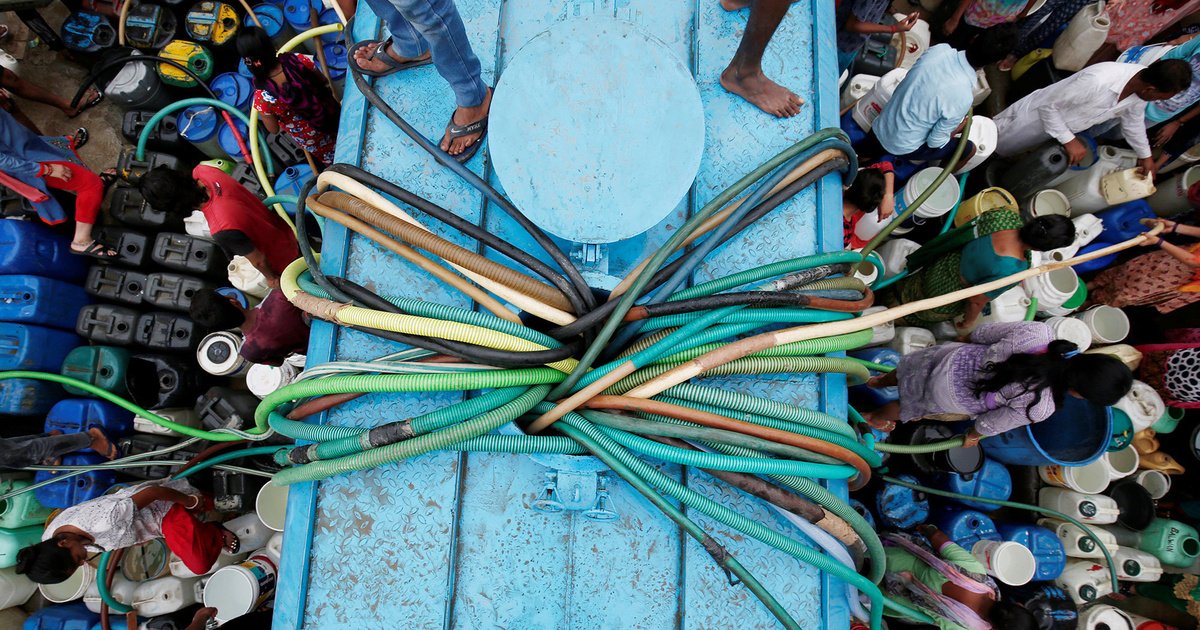Report on Moroccan Water Scarcity and Progress Towards Sustainable Development Goals
1.0 Executive Summary
Recent rainfall has provided temporary relief to Morocco’s water reservoirs following a seven-year period of severe drought. This situation highlights the nation’s vulnerability to climate change and underscores the critical importance of its strategic initiatives aimed at achieving Sustainable Development Goal 6 (Clean Water and Sanitation). This report analyzes the current status of water storage, the socio-economic impacts of the drought, and the government’s long-term strategies, including infrastructure development and policy reforms, in the context of the 2030 Agenda for Sustainable Development.
2.0 Current Water Reservoir Status and SDG 6
Data from the Ministry of Equipment and Water indicates a marginal improvement in national water storage, directly impacting the availability of water resources as outlined in SDG 6. The national dam filling rate has reached approximately 33.4%, with a total storage of 5.6 billion cubic meters.
2.1 Key Reservoir Levels
- Bin El Ouidane Dam: Filling rate increased to 11.6%.
- Hassan Dakhil Dam: Filling rate increased to 58.2%.
- Al Massira Dam: Filling rate remains critically low at 2.92%, illustrating the persistent challenge to water security. The reservoir’s capacity had fallen below 3% in 2023 due to insufficient rainfall and high agricultural demand.
3.0 Drought Impact on Sustainable Development Goals
The prolonged drought has had significant adverse effects on Morocco’s progress toward several interconnected SDGs.
- SDG 2 (Zero Hunger): Water scarcity has severely hampered agricultural productivity and livestock farming, threatening food security and the livelihoods of rural populations.
- SDG 6 (Clean Water and Sanitation): Depleted reservoirs have led to interruptions in the supply of safe drinking water for households, directly challenging the goal of universal water access.
- SDG 13 (Climate Action): The drought is a clear manifestation of an extreme weather event linked to climate change, highlighting the urgent need for robust climate adaptation strategies.
4.0 National Strategic Responses for SDG Attainment
The Moroccan government is implementing a multi-faceted strategy to mitigate the effects of drought and build long-term water resilience, aligning with multiple SDG targets.
4.1 Infrastructure Development for Climate Resilience (SDG 9, SDG 11, SDG 13)
- Large-scale desalination projects are underway to diversify water sources. The Casablanca facility, projected for completion in 2028, is expected to produce approximately 300 million cubic meters of water annually, enhancing water security for a major urban center in line with SDG 11 (Sustainable Cities and Communities).
4.2 Policy Measures for Sustainable Water Management (SDG 6, SDG 12)
- To ensure the sustainable management of water resources (Target 6.4), the government has restricted the cultivation of water-intensive crops, such as melons, in arid regions like Tata and Zagora. This policy promotes responsible consumption and production patterns (SDG 12).
5.0 Conclusion
While recent rainfall offers short-term relief, Morocco’s long-term strategy of investing in climate-resilient infrastructure and implementing water conservation policies is fundamental to its progress. These initiatives are crucial for stabilizing water access for both agricultural and domestic use, thereby advancing the nation’s commitment to achieving SDG 2, SDG 6, and SDG 13. The integrated approach of combining immediate relief with strategic planning provides a framework for building a sustainable and water-secure future.
Analysis of Sustainable Development Goals (SDGs) in the Article
1. Which SDGs are addressed or connected to the issues highlighted in the article?
- SDG 6: Clean Water and Sanitation – The core theme of the article is water scarcity, drought, dam levels, and efforts to secure a stable water supply.
- SDG 2: Zero Hunger – The article explicitly mentions that low reservoir levels have harmed agriculture and livestock, which are fundamental to food security.
- SDG 13: Climate Action – The drought is presented as an extreme weather event, and the government’s actions are responses to climate-related vulnerabilities.
- SDG 9: Industry, Innovation and Infrastructure – The article highlights long-term solutions like the construction of large desalination facilities, which represents an investment in resilient infrastructure.
2. What specific targets under those SDGs can be identified based on the article’s content?
-
SDG 6: Clean Water and Sanitation
- Target 6.4: By 2030, substantially increase water-use efficiency across all sectors and ensure sustainable withdrawals and supply of freshwater to address water scarcity. The article discusses Morocco’s severe drought, low dam levels, and measures like restricting water-intensive crops to manage scarce water resources.
- Target 6.5: By 2030, implement integrated water resources management at all levels. The government’s combination of managing existing reservoirs, restricting certain agricultural practices, and investing in new water sources like desalination points to an integrated management approach.
-
SDG 2: Zero Hunger
- Target 2.4: By 2030, ensure sustainable food production systems and implement resilient agricultural practices that increase productivity and production, that help maintain ecosystems, that strengthen capacity for adaptation to climate change, extreme weather, drought… The article notes that the drought has harmed agriculture and that the government is restricting water-intensive crops to make agriculture more resilient to water scarcity.
-
SDG 13: Climate Action
- Target 13.1: Strengthen resilience and adaptive capacity to climate-related hazards and natural disasters in all countries. The article describes Morocco’s drought as a multi-year extreme weather event and details adaptive strategies like building desalination plants and shifting agricultural practices to cope with its impacts.
-
SDG 9: Industry, Innovation and Infrastructure
- Target 9.1: Develop quality, reliable, sustainable and resilient infrastructure… to support economic development and human well-being, with a focus on affordable and equitable access for all. The construction of the Casablanca desalination facility is a direct example of developing resilient infrastructure to ensure a stable water supply for households and farms, thereby supporting well-being.
3. Are there any indicators mentioned or implied in the article that can be used to measure progress towards the identified targets?
-
For SDG 6 (Clean Water and Sanitation):
- Indicator for Target 6.4: The article provides specific quantitative data that can be used to measure the level of water stress. These include:
- The national dam filling rate (33.4%).
- Specific dam storage levels (Al Massira at 2.92%, Bin El Ouidane at 11.6%, Hassan Dakhil at 58.2%).
- Total water storage volume (5.6 billion cubic meters).
- The planned capacity of the new desalination plant (300 million cubic meters of water yearly).
- Indicator for Target 6.4: The article provides specific quantitative data that can be used to measure the level of water stress. These include:
-
For SDG 2 (Zero Hunger):
- Indicator for Target 2.4: The article implies an indicator through the government’s policy actions. The implementation of restrictions on the cultivation of water-intensive crops (like melons in Tata and Zagora) serves as a qualitative indicator of promoting resilient agricultural practices.
-
For SDG 13 (Climate Action):
- Indicator for Target 13.1: The article points to the adoption and implementation of national disaster risk reduction strategies. Morocco’s investment in desalination projects and its policies on crop restrictions are concrete examples of a national strategy to adapt to the impacts of climate change (drought).
-
For SDG 9 (Industry, Innovation and Infrastructure):
- Indicator for Target 9.1: The article provides a clear indicator of investment in sustainable infrastructure. The development of the Casablanca desalination project, with a specified completion date (2028) and capacity, is a measurable indicator of progress in building resilient infrastructure.
4. Summary Table of SDGs, Targets, and Indicators
| SDGs | Targets | Indicators Identified in the Article |
|---|---|---|
| SDG 6: Clean Water and Sanitation | 6.4: Increase water-use efficiency and ensure sustainable withdrawals to address water scarcity. | – National dam filling rate (33.4%) – Specific dam storage levels (e.g., Al Massira at 2.92%) – Planned capacity of new desalination plants (300 million cubic meters/year) |
| SDG 2: Zero Hunger | 2.4: Ensure sustainable food production systems and implement resilient agricultural practices. | – Government policy restricting the cultivation of water-intensive crops (e.g., melons). |
| SDG 13: Climate Action | 13.1: Strengthen resilience and adaptive capacity to climate-related hazards. | – Implementation of a national adaptation strategy through infrastructure upgrades (desalination) and agricultural policies to combat drought. |
| SDG 9: Industry, Innovation and Infrastructure | 9.1: Develop quality, reliable, sustainable and resilient infrastructure. | – Construction of large desalination projects (e.g., the Casablanca facility) to stabilize water supply. |
Source: thecooldown.com







